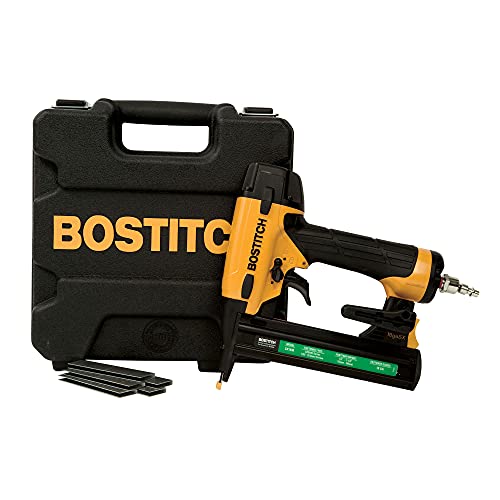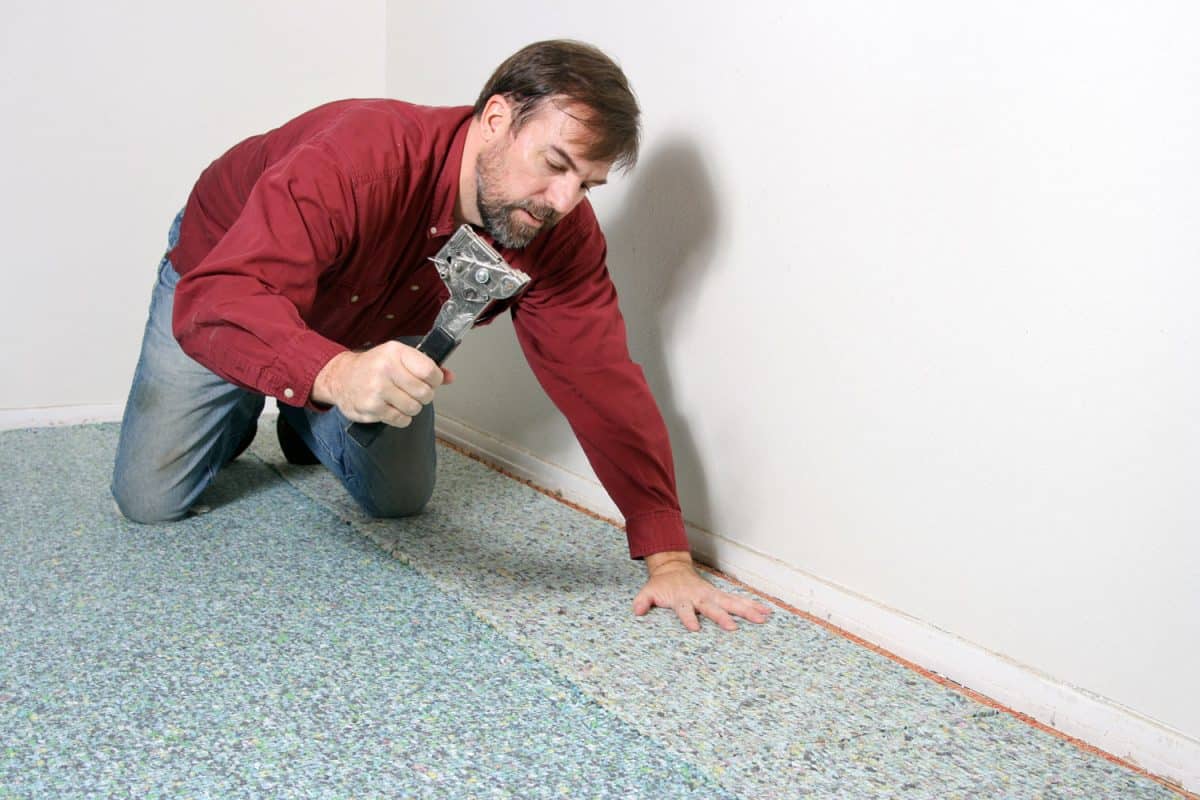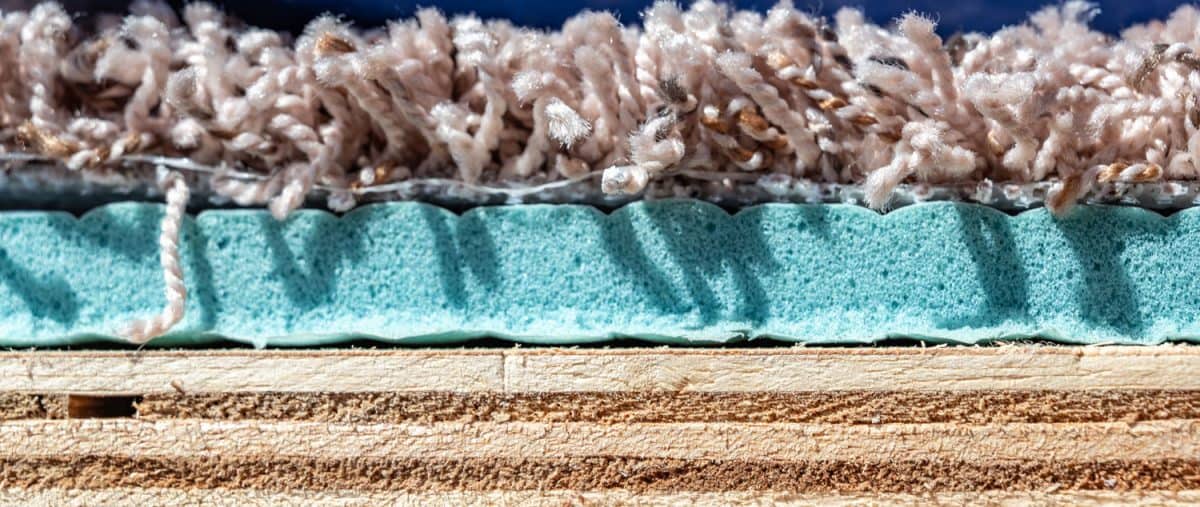If you've already decided to install your carpet with a stapler, then the first thing you need to know is - what kind of stapler? We've checked into the recommendations from flooring experts, and we're ready to tell you everything you need to know.
There are four basic kinds of staplers that you can pick from. They are:
- Electric
- Pneumatic
- Manual
- Hammer tacker
All of them are possibilities, and there are no wrong answers here. But each has advantages and disadvantages to consider when picking the best one for you.
Read on, and we'll break down exactly what the pros and cons of each type are. Then we'll cover crown staplers and what you need to know there. Finally, we'll review what size staples you need - and how to tell what size your stapler takes.
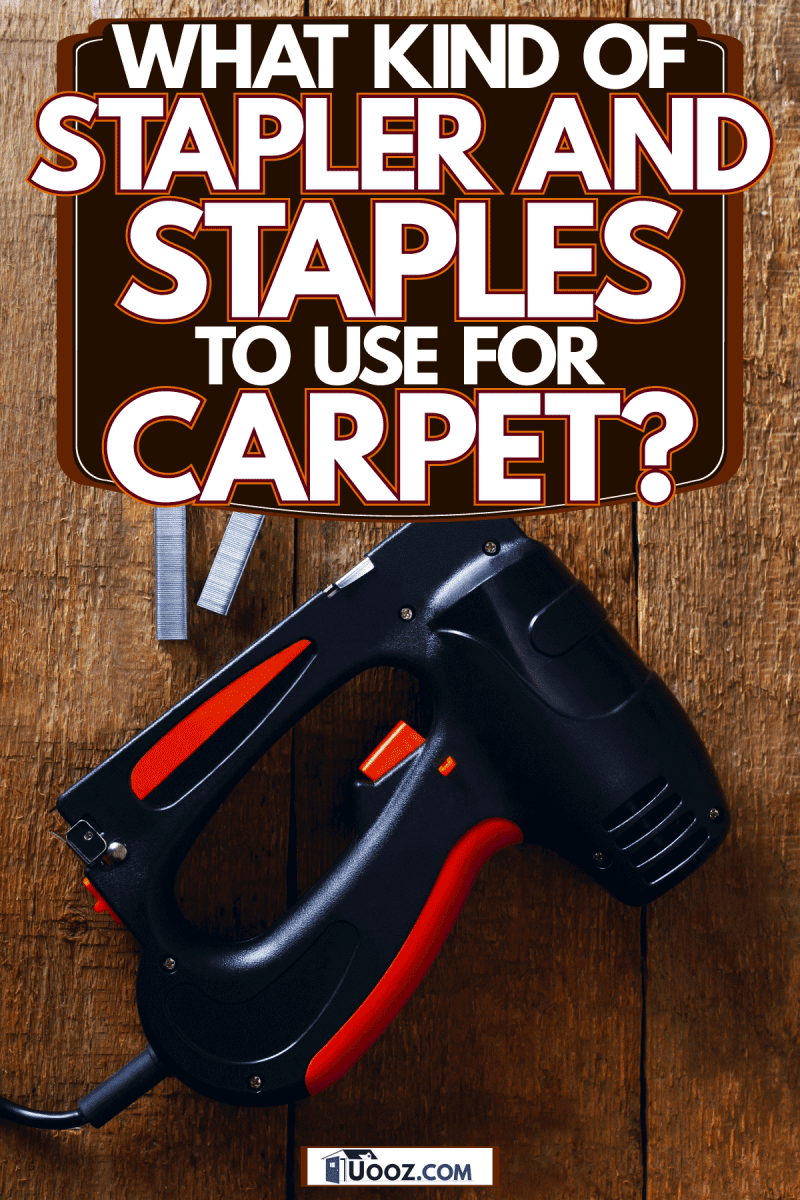
The Kinds Of Staplers For Carpeting
1. Electric Stapler
An electric stapler is one of the more common choices for installing carpeting. It's smaller than a pneumatic gun, making it a bit easier to fit into corners and tight spots.
It's also more affordable than a pneumatic gun and can be used in a variety of settings. Many of the other tools on this list are cheaper - but also aren't very flexible, and you won't find yourself using them on many other projects.
Electric staplers are relatively safe. There's little danger of misuse, as long as you're trying to follow instructions. It doesn't take a lot of training or experience to manage. For this reason, many people feel comfortable selecting an electric stapler to install a carpet.
Click here to see this electric stapler on Amazon.
2. Pneumatic
Pneumatic staplers are very strong and powerful - but for this reason, they can be a bit hazardous as well. Of all the staplers on this list, this is the one you have to "watch out for." Not that you can't safely use a pneumatic stapler, of course. But people who aren't particularly handy often steer clear of this one.
It only works with an air tank, which also means it's a bit more expensive and may be less practical. You need room to move around with the stapler and the air tank as well.
Plus, that air tank is loud. Many people find this whole system a bit intimidating. If you're comfortable with it, it's an option. But often, non-professionals select a different kind of stapler for carpeting.
Click here to see this pneumatic stapler on Amazon.
3. Manual Stapler
The pros? It's cheap, easy to use, and you might already have one. Plus, it's even smaller than an electric gun. If you need to be able to squeeze into a lot of nooks and crannies, this is the one for you.
The cons? Squeezing that trigger over and over will start to tire your hand out. It's hard to control just how deep the staples go - you'll end up hammering quite a few "half-done" staples in the rest of the way by hand. And it jams pretty easily, meaning you'll spend some time just fixing clogs and misfires.
Basically, if this is a one-time job in a small area and you already have a manual stapler, go for it. But you won't catch a professional wasting time with a manual stapler on a regular basis for a reason.
Click here to see this manual stapler on Amazon.
4. Hammer Tacker
A hammer tacker, or slap stapler, is similar to a staple gun. In fact, it's technically still a kind of manual stapler.
However, it's not what most people picture when they think of a stapler. A typical manual staple gun works by squeezing a trigger. But a hammer tacker actually "hammers" the staples into place. The nice part is that you don't have to worry about the constant "trigger squeeze" motion tiring your hand out.
But because you have to swing this tool like a hammer, it's not very precise. You can't neatly line a row of staples up along the edge of the carpet. They tend to come out a bit uneven - because of this, many people use them for carpet padding but not the carpet itself.
Can You Use An Electric Staple Gun On Carpet?
- The size and shape of the room. Electric staple guns are bulky and hard to use in small, tight corners.
- The subfloor. A staple gun won't hold carpet to concrete, for example.
You may also use more than one method. For example, you might use tack strips around the perimeter of the room. However, staples may be the best way to join the seams between pieces of carpeting.
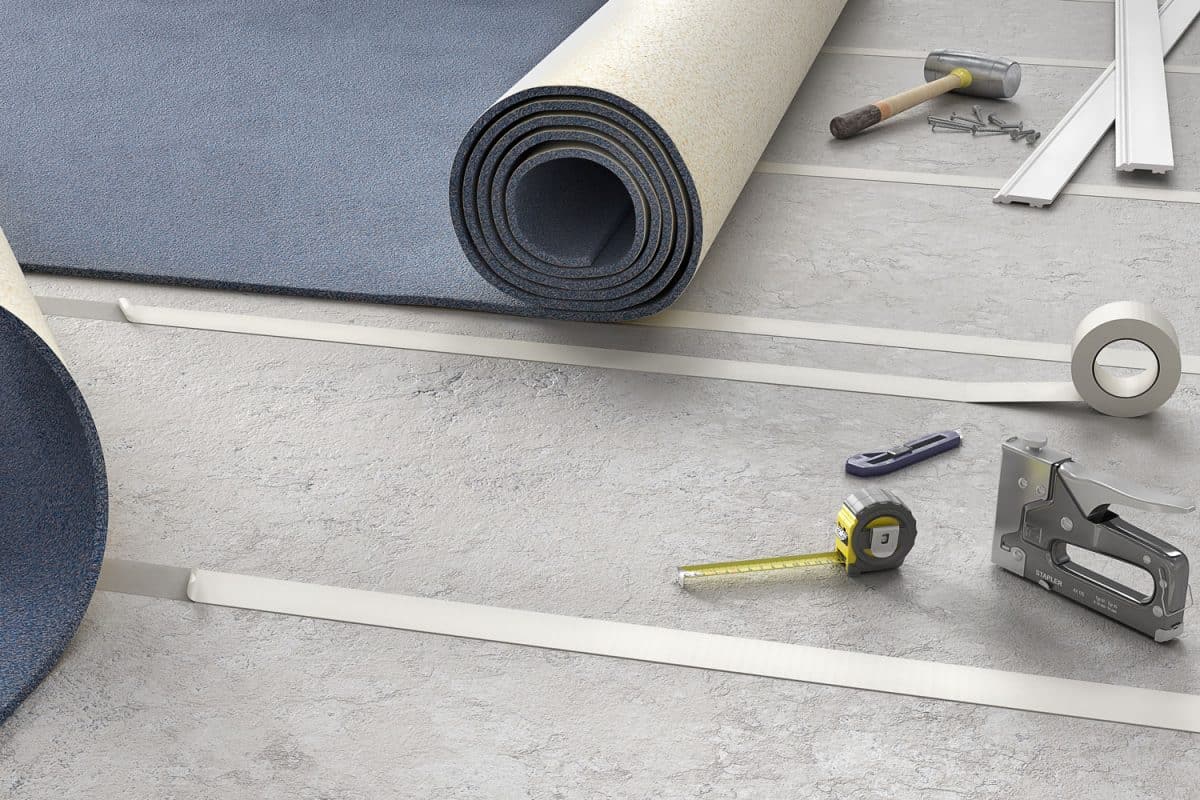
Can You Use A Crown Stapler For Carpet?
How Do You Know What Size Staples Your Staple Gun Takes?
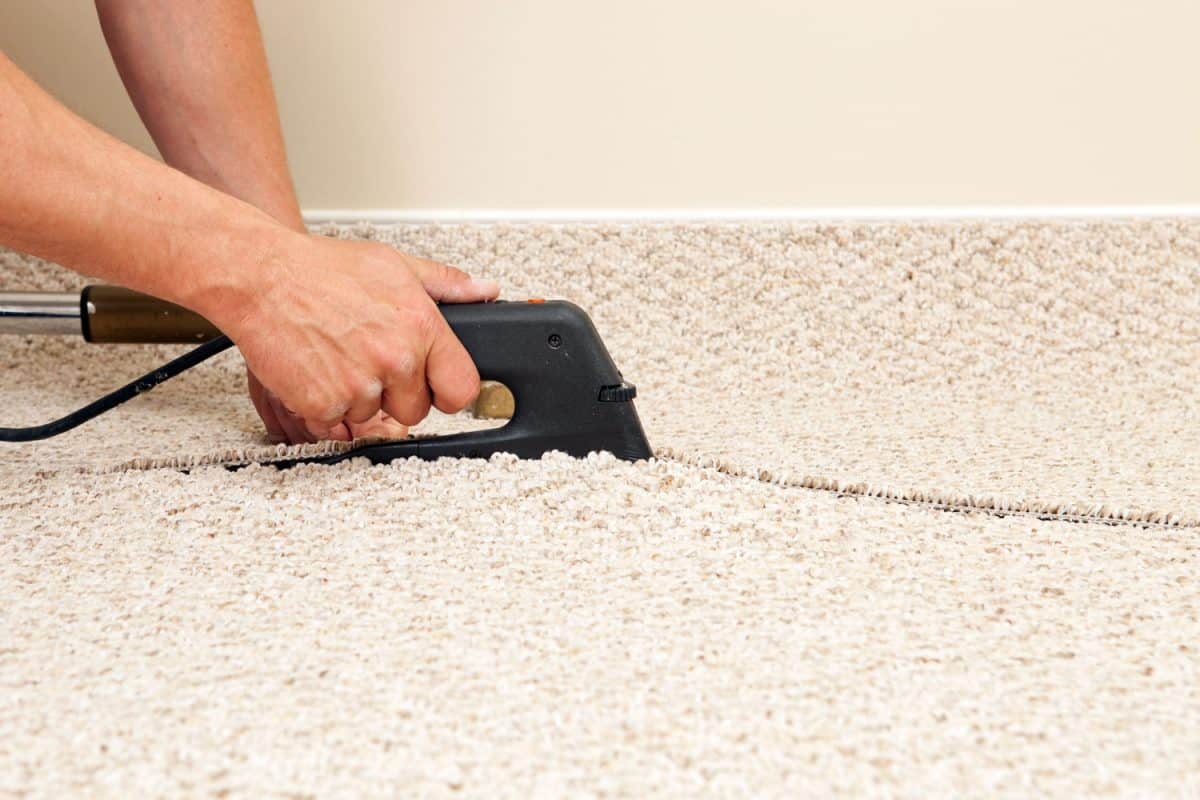
In Conclusion
Many people choose an electric staple gun for installing carpeting. It's less exertion than a manual staple gun. It fits into smaller spaces and is more affordable than a pneumatic staple gun. But it's possible to use any of these staplers on carpeting. Each one comes with pros and cons, so simply weigh them out to pick the right staple gun for you.
If you enjoyed this, try reading:


